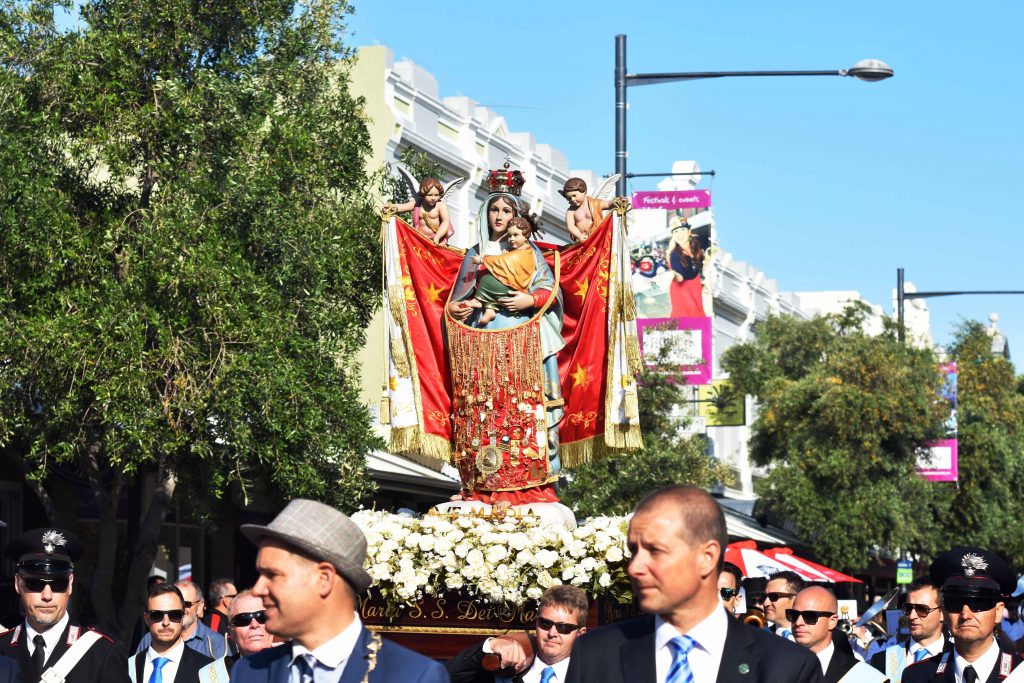By Daniele Foti-Cuzzola
The usually quaint, historic streets of the port city of Fremantle came to life on Sunday, 30 October, as a crowd of marching bands and devout Catholics walked the streets in honour of Our Lady.
The Blessing of the Fleet, as it has been known for the last 68 years, attracted numerous curious passers-by, some of whom joined the procession to and from the boat harbour.

Reminiscent of a traditional Italian Festa (feast), the event occurs on the last Sunday of October. It has been a staple for the City of Fremantle and a main fixture on many West Australian Catholics and non-Catholics’ calendars.
Beginning at Saint Patrick’s Basilica with a Mass celebrated by Perth Archbishop Timothy Costelloe, this year the procession paused at St John’s Anglican Church, where Perth Archbishop Timothy Costelloe and former Anglican Archbishop Peter Carnley shook hands.
The ecumenical gesture was warmly welcomed by Archbishop Carnley, who defined it as “a sign to all the world, particularly at this very troubled and unsettled point in its history, of the human unity and peace which the gospel of Christ calls men and women of all races and nations, as they seek to live life well together in community.”
The congregation, which included Fremantle Mayor Brad Pettit, then continued to the fishermen’s boat harbour where both Madonna statues were placed on separate boats and blessed by Archbishop Costelloe.
Following tradition, the statues were taken around the harbour on boats and returned to St Patrick’s Basilica, with a brief stopover at the esplanade for fireworks.
While Fremantle is today widely recognised for its large Italian community, the pioneer Italian migrants of Fremantle were mostly fishermen from the Sicilian city of Capo d’Orlando, the Aeolian Islands in the province of Messina, Sicily, and the town of Molfetta in the province of Bari, southern Italy.
The fishermen were accustomed to grand processions and religious celebrations in their hometown, where their local priests would bless their fleets, praying for a safe and bountiful fishing season.
While many arrived in Fremantle in the early 1900s, it was not until 1948 that the fishing community from Molfetta initiated the first Blessing of the Fleet celebration, where they paraded the streets in honour of their beloved Madonna di Martiri (Our Lady of Martyrs).
Several years later, their Sicilian counterparts brought their own statue, La Madonna di Capo d’Orlando, and every October since, the two statues have been affectionately paraded around Fremantle and blessed on the boat harbour in hopes of a safe and prosperous fishing season.
Italian migrants from other regions of Italy as well as Portuguese and Croatian migrants have traditionally also joined in the celebrations. Today, the Blessing of the Fleet is embraced by the wider Australian community and is part of the Fremantle Festival. The grandeur and magnitude of the event draws a crowd of thousands every year.
The Blessing of the Fleet is also celebrated all throughout the world, particularly in areas with large Italian communities such as Adelaide and Sydney and even Hoboken in New Jersey, USA.